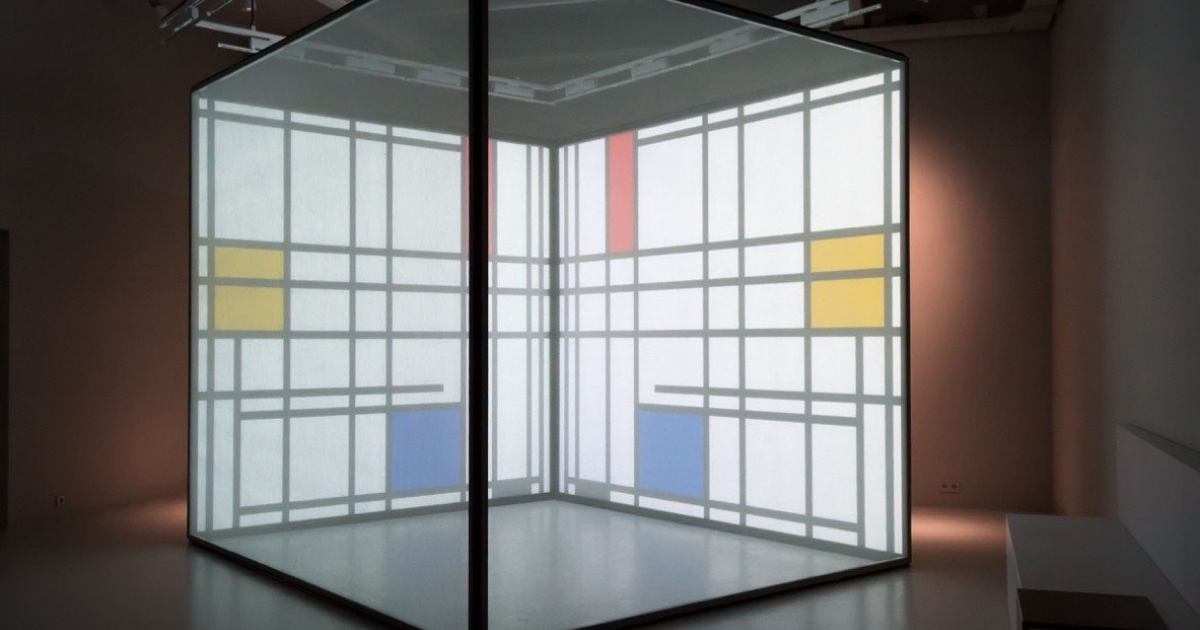I Paint Modern - Mondriaanhuis, New York Room

Finding the solution to this dual objective (to work both as a soundtrack and as an artistic interpretation) started with thorough research into Mondrian, music of his time, and how this influenced his work.
Sources of inspiration were music of Mondrian contemporary George Antheil (fellow member of De Stijl) and Conlon Nancarrow’s boogie-woogie based pieces for ‘pianola’ (automated piano). Influences were not limited to music from the forties: Bill Evans’ jazz piano voicings, minimal music and contemporary artists like Nils Frahm were also influential.
While the works of Mondrian can seem very rigid from a distance, they actually are very tactile and human upon a closer look. The main instrument, a Diskklavier (a current-day pianola) was chosen because of the similar combination of rigidity (it can play exact, programmed patterns) and tactility (wooden hammers touching real strings). Saxophone was instrumental in connecting the music with the jazzy NY vibe of the forties.
INSIGHTS
Viewing instructions
The supplied video mixes images from the actual installation in the NY Room with images from the two Diskklaviers playing the music as recorded. Its aim is to show the installation as experienced by the museum visitors while giving additional insight in the music.
The video shows the full time-line of the installation. It runs for five minutes and we would like to kindly ask the jury to view it in it's entirety, as we consider the build-up and development of the music through the various stages as an integral part of the quality of the work.
If you nevertheless find you must skip, please make sure you have heard several sections including:
- arrival in New York (start)
- first development of work (around 1'20")
- climax to reveal Broadway Boogie-Woogie (4'00)
- leading right into the 'liberation', the end section.
Bit of trivia: the title of the music composition "I Paint Modern" is an anagram of Piet Mondrian (for Dutch readers: Mondriaan changed his name to Mondrian when he moved abroad)
This entry is about the original music composition ‘I Paint Modern’, written for the video installation in the New York Room of the Mondriaanhuis museum.
The objective of the video installation is to let visitors experience the last stage of Mondrian’s artistic development. During the tumultuous WWII years, residing in NY, Mondrian is struggling to free himself from the self-imposed limitations of working with black lines and colored rectangles only. Via using colored lines, he finally arrives at using shimmering squares of bright color in his landmark piece Broadway Boogie-Woogie.
The objective of the music is to help tell this story: to elevate the mix of archive images and animation to a 'struggle towards liberation' with Mondrian as our protagonist. Secondly, the music is an artistic interpretation of Mondrian’s work. The music works at two levels: as a film score aiding the development of the story, and as an autonomous work reflecting on the art of Mondrian.